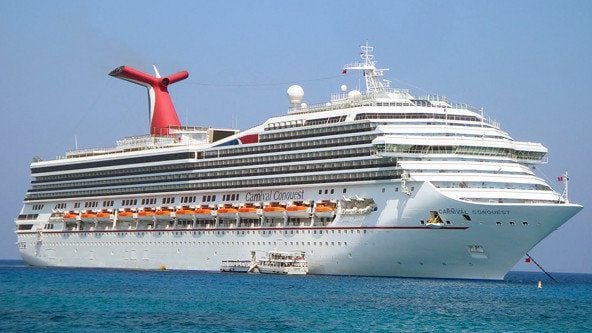You’ve undoubtedly seen the towering whale tail embellishing ships belonging to a prominent cruise company if you’ve traveled the oceans. The attractive and functional red, white, and blue funnel with fins on both sides. But do you know what this is for?
On cruise ships, the whale tail is used to deflect diesel emissions over the stern and away from passengers.
What is the Purpose of the Whale Tail?
On cruise ships, the whale tail is used to deflect diesel emissions over the stern and away from passengers.
Norwegian University of Science and Technology (NTNU) researchers are testing a model whale’s tail that may be added to ships to increase fuel economy. In collaboration with Rolls-Royce and the British businesses Seaspeed and MOST, NTNU is undertaking these experiments in the Marintek Towing Tank.
The rear of the platform has a 1:16.57 scale model ship that rides the Towing Tank’s human-made waves. Although crossing the 200-meter-long tank takes only a few seconds, vital data is still being acquired. Cameras and advanced measurement equipment indicate how the model moves, resists change, and is affected by it.
Eirik Bøckmann, a postdoctoral fellow at NTNU Department of Marine Technology, is in charge of testing this idea. He’s been working on this concept for a long time. (Source: Science Daily)
Utilizing the Power of Waves
The primary purpose of the whale’s tail is to decrease fuel consumption by utilizing wave energy to propel the ship forward.
When you view this creation, the first image that comes to mind is a whale’s tail; it resembles two wings or fins affixed to the ship’s front. However, the energy-saving technique is similar to that of a whale’s tail.
The ship model moves as a result of the waves hitting it, which causes the fins to move up and down like a whale’s tail. The form of these fins allows wave energy to assist the ship in moving ahead. (Source: Science Daily)
How Does the Whale Tail Reduce Pitching and Resistance?
The first findings are pretty encouraging.
Under the conditions we tested, the foils decreased resistance on the ship by 9 and 17 percent at wave heights under three meters.
Eirik Bøckmann, Postdoctoral Fellow, Department of Marine Technology at NTNU
This is a typical wave height in the North Sea and the Norwegian Sea.
The resistance may be decreased much more by optimizing the ship’s hull for the wave foils and the foils also reduced the ship’s heaving and pitching by roughly the same amount as for resistance.
Eirik Bøckmann, Postdoctoral Fellow, Department of Marine Technology at NTNU
The results are encouraging, but the research is still in its early phases.
We need to observe how things operate and then determine the best path based on that.
Alastair Sim, Rolls-Royce Strategic Research Center Technologist.
Sim believes that if this technology works as planned, it has much potential. Sim is in charge of assessing new maritime technology and determining what Rolls-Royce should invest in. It’s not enough for the wings to just function. Other elements come into play as well. The wings, for example, must be able to absorb a hit without destabilizing the ship.
Experience from previous ideas demonstrates that crashes with broken wings have little effect on the ship’s true stability.
Alastair Sim, Rolls-Royce Strategic Research Center Technologist.
Although Bøckmann’s fins are distinctive in shape and angle, comparable technologies have been developed and deployed in the past. (Source: Science Daily)
